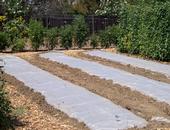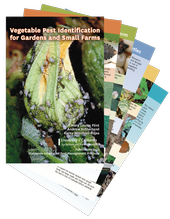
The sight of deer in the wild can be delightful but when these animals invade your garden, devouring everything in sight, people's ideas might change. The internet is full of advice for ridding your garden of deer, but beware, much of it is ineffective.
In the newly revised Pest Notes: Deer, author and retired Wildlife Specialist Robert Timm, shares detailed deer management methods proven by UC research to be effective. Pest management works best when you understand the pest's biology and behavior, so new information about the range of the different deer...

Many gardeners and landscapers enjoy growing and caring for roses. Through careful selection of varieties and appropriate cultivation, roses can be grown with a minimum of pest problems. Establishing rose plants to grow in environments with adequate conditions will allow them to grow well, while reducing their susceptibility to pests.
Find more information on growing healthy roses in UC IPM's newly updated Pest Notes: Roses in the Garden and Landscape: Cultural Practices and Weed Control, authored by John Karlik, Environmental Horticulture Advisor with UC Cooperative Extension, Kern County.
What's new in this version? You'll find examples...
![Adult pocket gopher peeking out of a burrow entrance. [Credit: T. Chalmers]](https://ucanr.edu/blogs/UCIPMurbanpests/blogfiles/62454small.jpg)
Gophers are well-known and certainly unwelcome pests in landscapes, gardens, lawns, and athletic turf. More correctly called pocket gophers, these rodents mostly remain hidden underground in tunnels and feed on plants from below, sometimes pulling whole plants into their tunnels. They prefer herbaceous plants but will eat a wide range of vegetation.
A single gopher can destroy a landscape quickly, so control measures need to begin as soon as the gopher is detected. Mounds of fresh soil are usually the first indication of their presence. Effective integrated management of pocket gophers relies largely on exclusion measures and trapping, although poison baits are also available.
Read more about gophers, their behavior, and...

Soil solarization is a method home gardeners and farmers can use to manage soilborne pests such as weeds, disease pathogens, nematodes and insects. Solarization can reduce help reduce pesticides used to control these pests.
Soil solarization is simple: prepare the site, water it a bit, then cover the soil with clear plastic for an extended period of time to allow the sun to heat the soil to temperatures lethal to a wide range of pests.
Learn more about this process in our recently updated Pest Notes: Soil Solarization for Gardens & Landscapes, by authors Jim...



